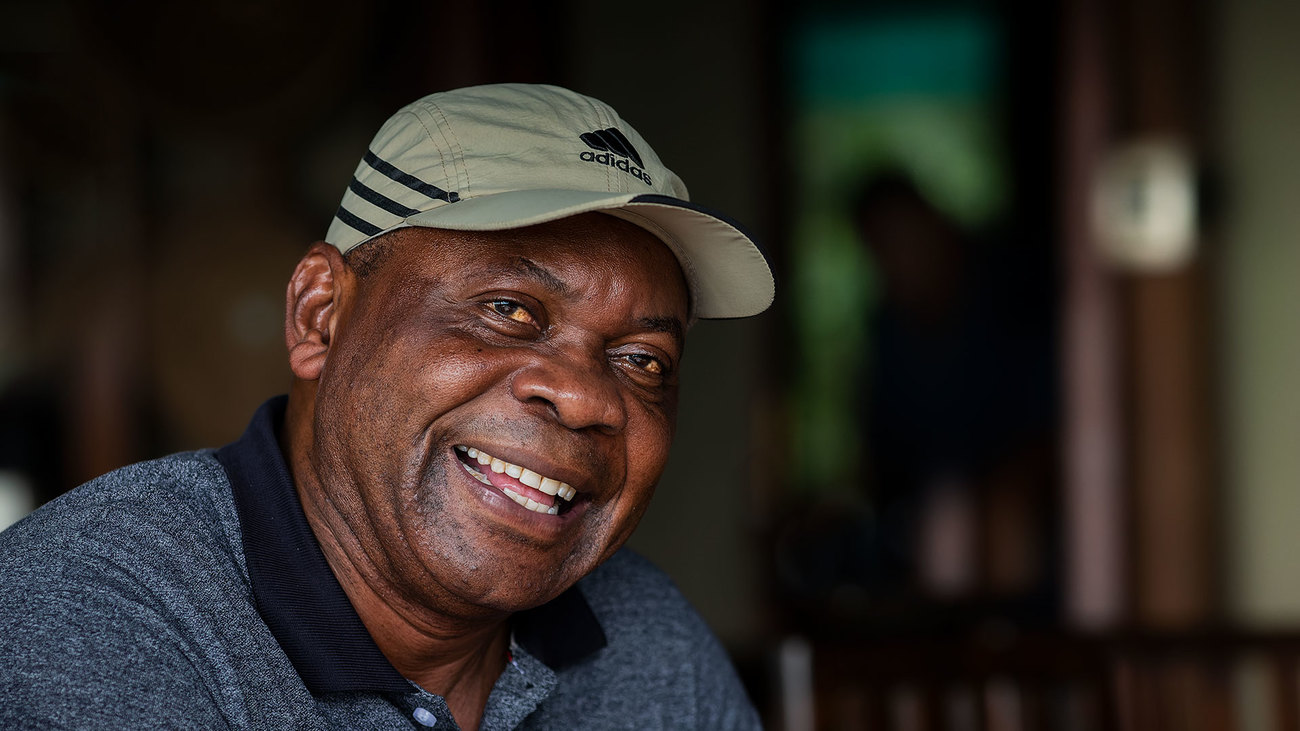Patricio Ndadzela
Increasing elephant populations by combatting wildlife crime in Malawi and Zambia
Increasing elephant populations by combatting wildlife crime in Malawi and Zambia

The International Fund for Animal Welfare (IFAW), with funding from the United States Agency for International Development (USAID), has completed the implementation of a five-year Combating Wildlife Crime Project in the Malawi-Zambia transboundary landscape. The project targeted Malawi's Kasungu National Park as well as Zambia's Lukusuzi and Luambe National Parks. The project began in 2017 and the USAID funding concluded on May 24, 2022. In this Q&A Patricio Ndadzela, the Project’s Chief of Party, explains the project’s journey and its accomplishments.
The implementation phase of the Combating Wildlife Crime Project concluded in May 2022. How was it?
We finished the project on a high note and, despite some challenges along the way, we achieved the project’s goal. It should be noted that the project doesn’t end here. IFAW, in partnership with the Department of National Parks and Wildlife (DNPW) of both Malawi and Zambia, will continue working in the area to ensure that the achievements so far are sustained.
What was the goal of the project?
The goal was to stabilise or increase elephant populations in the targeted landscape by decreasing mortalities through effectively combating wildlife crime. The project has produced remarkable results. An aerial wildlife survey conducted in 2020 showed that the population of elephants in Malawi's Kasungu National Park increased from just 40 in 2015 to 121 in 2020. The numbers of other wildlife have also increased.
Another important achievement is that we have successfully collaborated with Zambia’s and Malawi’s DNPWs to ensure that the efforts to combat wildlife crime are coordinated.
How did you achieve these results?
As a project, we had four strategies. The first strategy focused on cross-border collaboration and coordination, with law enforcement officers from Malawi and Zambia working together in the fight against wildlife crime. This approach not only recognised the Malawi-Zambia transfrontier conservation area (TFCA), but also coordinated law enforcement efforts to make cross-border illegal trafficking much more challenging.
Other strategies included training, mentoring and equipping law enforcement officers to enable them carry out their responsibilities efficiently—for example, by providing them with food rations, uniforms and transportation. Empowering the capacity of the DNPWs and boosting the morale of rangers improved frontline conservation to protect both the habitat and the animals that live there.
Community participation was another strategy in all our operations. Acts of poaching are human-induced, so for conservation efforts to thrive it’s vital that we inspire communities to be part of our fight against illicit wildlife crimes in the landscape.
The project supported communities in beekeeping, environmental education and other income-generating activities such as tailoring and small-scale retail (tuck shop). The aim was to ensure that communities recognise the value of wildlife and put an end to poaching.
In recognising that wildlife crime prevention needs to be tackled from the field to the courtroom, the project provided prosecutorial and judicial assistance to ensure that suspects were successfully prosecuted.
What else has the project achieved?
Other achievements of the project apart from the increased number of elephant population include;
- The buffalo population has increased from 61 to 165.
- The sable antelope population has increased from 93 to 397.
- The kudu population has increased from 30 to 197.
- 40 kilometres of fence constructed in preparation for the translocation of 250 elephants from Liwonde National Park into Kasungu.
- A total of 38,769 learners were reached with environmental lessons, much more than the initially planned 30,000 learners.
- 2,291 wildlife offenders have been arrested thanks to patrols by law enforcement officers.
- More than 3.5 tonnes of ivory has been seized.
- More than 828 coordinated transboundary anti-poaching operations have been facilitated.
- A total of 3,016 people, including women, have benefited financially from the project by actively participating in fence construction, tailoring, mechanics, retail and craft work.
The project has also constructed 40 kilometres of fence in preparation for the translocation of 250 elephants from Liwonde National Park into Kasungu.
What are the lessons learnt in this project?
Community participation in all project activities is key to producing the desired results. When communities learn about the importance of wildlife conservation, they are at the forefront of wildlife protection. The second key learning is that when law enforcement officers are motivated and given the resources they need to do their work, they are better able to protect animals and prevent wildlife crime.
What is your message to USAID?
USAID has been a critical partner in ensuring wildlife protection in the landscape. We can’t celebrate this project’s accomplishments without mentioning the generosity of the American people. Thank you, and please continue to support wildlife conservation.
We also want to thank the DNPWs from both Zambia and Malawi, as well as sub-grantees the Lilongwe Wildlife Trust (LWT), Imani Development Ltd and Wildlife Crime Prevention for being part of this journey.
What’s the way forward?
The project has come to an end, but IFAW will remain in the landscape to ensure that our achievements are sustained.
Caption
Ndadzela- We are finishing the project on a high note.
Related content
Our work can’t get done without you. Please give what you can to help animals thrive.